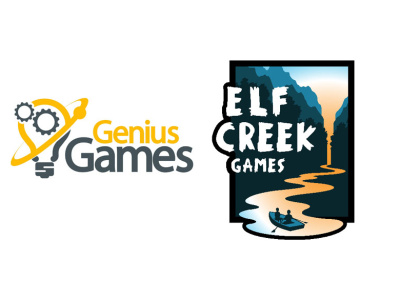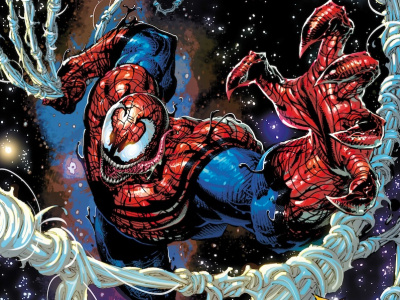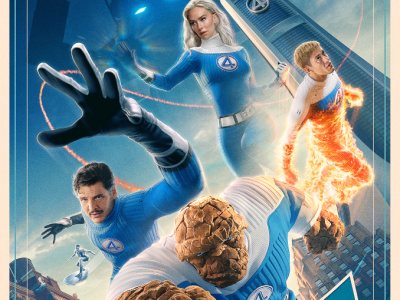
In Part Two of our two-part interview with Marvel Publisher Dan Buckley, we talk about getting new readers started on Marvel Comics, Marvel’s publishing plans to tie into the company’s two movies next year (Thor and Captain America), some of the changes resulting from the new ownership by Disney, and Buckley's messages to the trade.
In a tight economy one of the things we hear stores talking about is that the tightly interwoven continuity makes buying comics an all or nothing kind of proposition, where you can’t follow a storyline if it’s moving through multiple titles as easily. The question is, given the environment, what are the good jumping on points for adults in the Marvel line right now?
The Ultimate books are all solid for that; they don’t interweave with each other at all. Captain America stands on its own. I would argue Iron Man stands on its own. The only books where you’re dealing with a lot of interweaving of late have probably been the X-Men books. We’re shipping Amazing Spider-Man three times a month but that’s the book; it wasn’t really tying to anything else. But if you brought somebody new into the store that said ‘I don’t know jack about comics,’ I think the Ultimate line is probably the easiest place to get started. I also believe our individual hero books, Cap, Thor, Iron Man, Wolverine, very specifically the Jason Aaron run, are good.
We do pay kind of close attention. The X-Men line is only one where you’ve seen part one, part two, part three. It’s something we’re very cognizant of because we have to pay attention to our trade business. Since we really didn’t have a huge event this year (Seige wrapped up by February) we haven’t had quite as much of what you’re hearing about than most people probably think we’re doing.
And the other thing is that you run the constant battle of people saying ‘we need one-shots for people to jump on to,’ but the ordering trends don’t play to that a lot. The ordering trends play to ‘is this tied to an event.’ It was very evident with DC’s Brightest Day and Darkest Night orders. It was very evident during Civil War. So you hear that said a lot but most of the sales are very contradictory to those desires. Making books as easily entered into as possible is something we try to pay close attention to. I’m not going to deny that we don’t get lost in our own soup sometimes which is the nature of serialized story-telling. It’s hard to keep the revenue numbers without tying in books to leverage off the big books.
How about on the kids side? That’s another place that new readers come from and over the last few years Marvel’s been expanding its kids offerings. How are they doing and where do you see that going?
We’re very pleased with the all ages books we’ve been developing. Marvel Adventures is still going strong—Marvel Adventures Spider-Man is our number one subscription book. The First Class books that we do in X-Men are very much built to be all ages books and we market them as such. Wizard of Oz has been a huge hit for us, Pride and Prejudice… We’re pleased with the efforts we’ve made; the sales numbers are good.
A lot of sales, as you probably would assume, are coming out of having a backlist in the book area for direct market and book market. The good news is we’ve got quite a bit of material now. We had to build the library in the first four or five years because we really had nothing to create a trade program to get any shelf space. Now we have something that we can have people continue to push through. We’re going to continue our efforts in the all ages area. We’ll probably figure out how we can learn from some folks on the distribution side from our Disney friends. We’ll just keep on plugging away at that. It’s going to be here for a long time.
Looking ahead to 2011, Marvel’s got a couple of movies coming out. Can you talk first about what you’re doing from a publishing standpoint to prepare the ground and exploit the interest that’s going to come from the movies?
I think most people have seen our strategy and how we load up the product. You’re going to see a whole lot of the classic backlist stuff in trades; we’ll get them prepared to be put in the market. For Thor, we’ll probably get that product loaded in during February and March. For Cap, you’re probably looking for more May, June.
The good news with Cap and Thor is that we’ve got a lot of really good classic material to pull from, more so than we had for Iron Man; I think Iron Man was more of a challenge for us. From our publishing plan over the last several years we’ve had a bit more time to prepare for Cap and Thor. The relaunches with Matt Fraction on Iron Man; JMS leading into Kieron [Gillen] that’s going to lead back to Matt Fraction on Thor; Brubaker’s Cap, all these things we were playing to those advantages to get to this place some day.
The other big piece is Free Comic Book Day. We’ll definitely something that will feature Cap, Thor, to leverage it, because that’s usually so well-timed with our first movie.
There’s even a lot of our frontlist materials of great quality and great relevance that we’ll be able to really push and emphasize sales on. We’ll be doing some stuff in our Q1, Q2 publishing schedule next year that will be sold in series and one-shots, very focused on Cap and Thor. And then the marketing event program for next summer will heavily leverage on Iron Man, Cap, and Thor so that when people get all this marketing from the studios they’ll find a lot of high quality product from our backlist and front list and comics in store at the same time. If you look at Marvel Previews you’ve probably seen the initial inkling of how we’re preparing products for Thor.
One of the things we’ve seen with some other non-Marvel properties has been that the movies draw attention to characters and that draws people to digital content which can then draw them back to paper content. Do you have any specific plans for Thor or Cap that leverage that phenomenon?
They’re working on that now, the digital side. The first piece is coordinating with studios and seeing if they want to participate with relevant products that are promo material for the studios. We’ll see if that plays out for either or both properties. And then if that doesn’t happen we’ll just come up with something publishing-centric that will drive that kind of activity through. But it would definitely help and David Gabriel and the digital team are working on that.
You’re about nine months into the new ownership of the company. What are the biggest opportunities you’ve seen come through as a result of that?
Specifically on publishing, on the graphic fiction and the comic core comic book business, most of the opportunities have been associated with knowledge-sharing, getting increased insights into the international markets.
As we get further into this relationship and we learn more about each other there are probably things that we can bring to bear that will be very helpful with the retail community and how we can support the retail community more. But we’re still working through those processes because our hobby retail business is very kind of foreign to Disney.
It’s been the knowledge-sharing and support that we’ll get with our licensed publishing initiatives. We’ll get more people involved and reach out to more kids. They do an unbelievable job with getting product out to kids under twelve years old who are outside of comics, while we’re doing all the comic stuff. There are going to be stronger activity programs, sticker programs, chapter books, things along that line, both
In the international space there’s been a lot to learn with them just through their relationships. We’re exploring what properties they have coming up in the future that we would be a good fit for publishing. We’re trying to do that stuff in a really smart way. One of the fun things that I think everyone is appreciating what we did with Tron and the variant covers of that.
And then in the non-publishing area it looks like Marvel’s going to have a new venue for television with XD and the block that they’re building there.
I’m involved with that. Obviously there’s the Avengers show premiering the week after New York Comic Con. There will be a great deal of promotion behind the show. They’ve been fabulous to work with. It’s a very new world to have that kind of relationship where we’re the same company and it’s ‘what can we do,’ where one plus one is three. There’s going to be a lot more announced in the future--what programs we’re going to be getting on the DXD platform and what properties or franchises will be released on that platform. That’s something we’re learning a whole lot on. I think it’s great.
Our readership is the trade. Any other comments relative to them?
I just would like to emphasize that the hobby trade is our number one priority and always will be. It would be foolish for us to not have it that way.
In some ways I think all the efforts that we’ve done in the digital space are probably the most disconcerting to some folks. Or not even disconcerting—there’s an unknown factor to it that probably has people shaking their heads and trying to figure things out. Yes we want to make money [on digital], but we want to make sure that we continue to get this industry growing and on strong footing.
The book market also provides that feeder program and we’re very excited about what we may be able to do to expand our franchise, just from the recent switch from Diamond Books to Hachette. We think Diamond’s done a great job for us over the last several years but we felt we needed to get a little bit more strength at retail so we could be stronger on the promotional side and get more of our product out there to intercept readers.
In Part One of our two-part interview with Marvel Publisher Dan Buckley, we talked about the state of the market, comic prices, and the growing market for digital comics and what that means (see “Interview with Dan Buckley, Part 1”).







